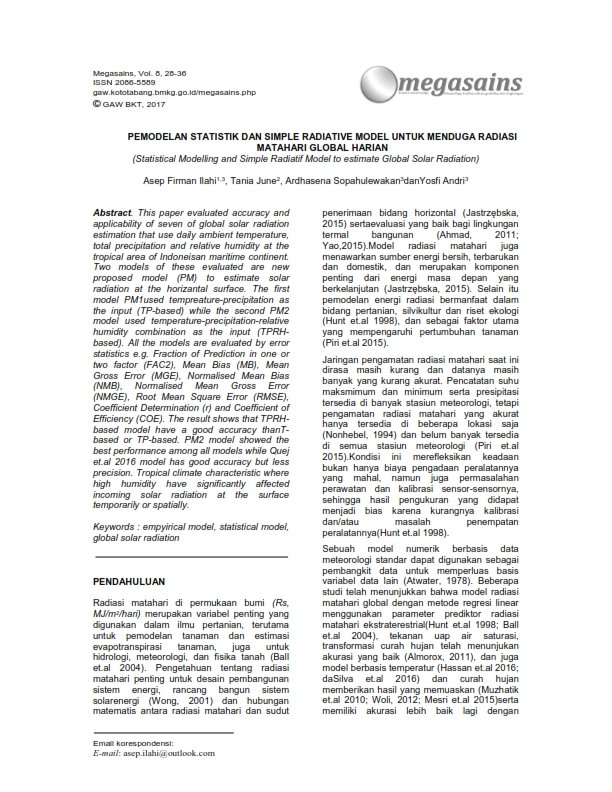Statistical Modelling and Simple Radiatif Model to estimate Global Solar Radiation
Main Article Content
Abstract
This paper evaluated accuracy and applicability of seven of global solar radiation estimation that use daily ambient temperature, total precipitation and relative humidity at the tropical area of Indoneisan maritime continent. Two models of these evaluated are new proposed model (PM) to estimate solar radiation at the horizantal surface. The first model PM1used tempreature-precipitation as the input (TP-based) while the second PM2 model used temperature-precipitation-relative humidity combination as the input (TPRHbased). All the models are evaluated by error statistics e.g. Fraction of Prediction in one or two factor (FAC2), Mean Bias (MB), Mean Gross Error (MGE), Normalised Mean Bias (NMB), Normalised Mean Gross Error (NMGE), Root Mean Square Error (RMSE), Coefficient Determination (r) and Coefficient of Efficiency (COE). The result shows that TPRHbased model have a good accuracy thanTbased or TP-based. PM2 model showed the best performance among all models while Quej et.al 2016 model has good accuracy but less precision. Tropical climate characteristic where high humidity have significantly affected incoming solar radiation at the surface temporarily or spatially.
Article Details

This work is licensed under a Creative Commons Attribution-NonCommercial 4.0 International License.
The author is willing to retain the copyright and grant journal rights to the first publication with works that are simultaneously under license the Creative Commons Attribution-NonCommercial-NoDerivatives 4.0 International. It allowing the others to share the work with recognition of the author's work and the initial publication in this journal.
Authors can enter into separate additional contractual arrangements for the non-exclusive distribution of published versions of journal works (for example, posting them to institutional repositories or publishing them in a book), with recognition of the initial publications in this journal.
Authors are permitted and encouraged to send their work online (for example, in their institutional repositories or websites) before and during the submission process because it can lead to productive exchanges, as well as previous and larger citations of published works.

